Chapter 3: Planning and Scoping the BCM Audit
A successful BCM audit hinges on meticulous planning and a clearly defined scope. This chapter outlines the critical steps in establishing a robust audit program and laying the groundwork for a comprehensive evaluation.
Establishing the BCM Audit Program
The first step involves establishing a formal BCM audit program within your organization. This program defines the overall framework for conducting BCM audits, outlining:
- Audit Frequency. Determine how often BCM audits will be conducted (e.g., annually, biannually).
- Audit Resources. Allocate necessary resources, including internal audit staff, external auditors (if applicable), and subject matter experts.
- Audit Methodology. Select a suitable audit methodology aligned with your organization's needs. This could be a risk-based approach focusing on high-impact areas or a more comprehensive review.
Defining the Audit Scope
 The audit scope clearly defines the boundaries and limitations of the audit. It outlines which aspects of the BCM program will be evaluated and the level of detail involved.
The audit scope clearly defines the boundaries and limitations of the audit. It outlines which aspects of the BCM program will be evaluated and the level of detail involved.
Here are some critical considerations for defining the scope per the BCM Institute's Planning Methodology.
- Risk Analysis and Review (RAR). Will the audit delve into the organization's risk assessment methodology and effectiveness in identifying BCM risks?
- Business Impact Analysis (BIA). To what extent will the audit assess the BIA's accuracy in identifying critical business functions (CBFs) and their associated recovery time objectives (RTOs)?
- Business Continuity Strategy (BCS): To what extent will the audit assess the strategy for recovering critical business functions (CBFs)?
- Business Continuity (BC) Plans. Will the audit thoroughly examine the BC Plans' content, clarity, and maintainability?
- Testing and Exercising. Does the scope include evaluating the frequency and effectiveness of BCP testing and exercising procedures?
- Program Management. Does the organisation have a program to manage and sustain the BC initiatives?
- Management Commitment. Will the audit assess the management commitment and support level for the BCM program?
Factors Influencing Scope Definition:
- Industry Regulations. Regulatory requirements may dictate specific areas the audit must address.
- Organization Size and Complexity. Larger organizations with more intricate BCM programs may require a more comprehensive audit scope.
- Risk Profile. The organization's overall risk profile should influence the scope, focusing on areas with a higher potential for disruption.
Selecting the Audit Team
A competent and qualified audit team is crucial for a successful BCM audit. The team should possess the following attributes:
- BCM Expertise. Auditors with a strong understanding of BCM principles, methodologies, and best practices.
- Industry Knowledge. For industry-specific BCM standards, auditors with relevant industry experience are beneficial.
- Auditing Skills. Experience in conducting audits and applying audit methodologies.
- Objectivity and Independence. Auditors should be independent of the BCM program they are.
Developing the BCM Audit Plan
Following the program's establishment, scope definition, and team selection, the next step is to develop a detailed BCM audit plan. This plan serves as a roadmap for conducting the audit and typically includes the following elements:
- Audit Objectives. Clearly defined objectives outlining what the audit aims to achieve.
- Audit Timeline. A defined timeframe for the audit process, including interview scheduling, document review, and reporting.
- Resource Allocation. Assigning specific tasks and responsibilities to each audit team member.
- Communication Plan. A strategy for communicating with stakeholders throughout the audit process.
Summing Up ...
By carefully planning and scoping the BCM audit, you lay the foundation for a comprehensive and effective evaluation.
A well-defined program, a focused scope, a competent team, and a detailed plan ensure a smooth audit process. This ultimately leads to valuable insights into the organization's BCM program's strengths and weaknesses.
More Information About Blended Learning Auditing BCMS Courses
BCM Institute offers two levels of BCM auditing courses: A-3 BCM-8030 ISO22301 BCMS Auditor [A-3] and the ISO22301 BCMS Lead Auditor [A-5].
 |
![TMM [BL-A-5]](https://no-cache.hubspot.com/cta/default/3893111/e7af9322-15cb-412d-91b6-59cd388ee6e9.png) |
![Register [BL-A-5]](https://no-cache.hubspot.com/cta/default/3893111/bb38417e-6241-4057-b90c-f319f31a494e.png) |
 |
 |
 |




![Email to Sales Team [BCM Institute]](https://no-cache.hubspot.com/cta/default/3893111/3c53daeb-2836-4843-b0e0-645baee2ab9e.png)



